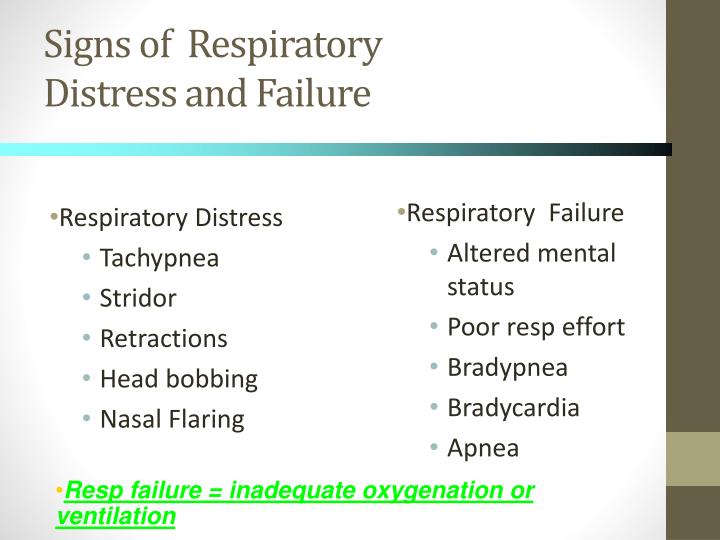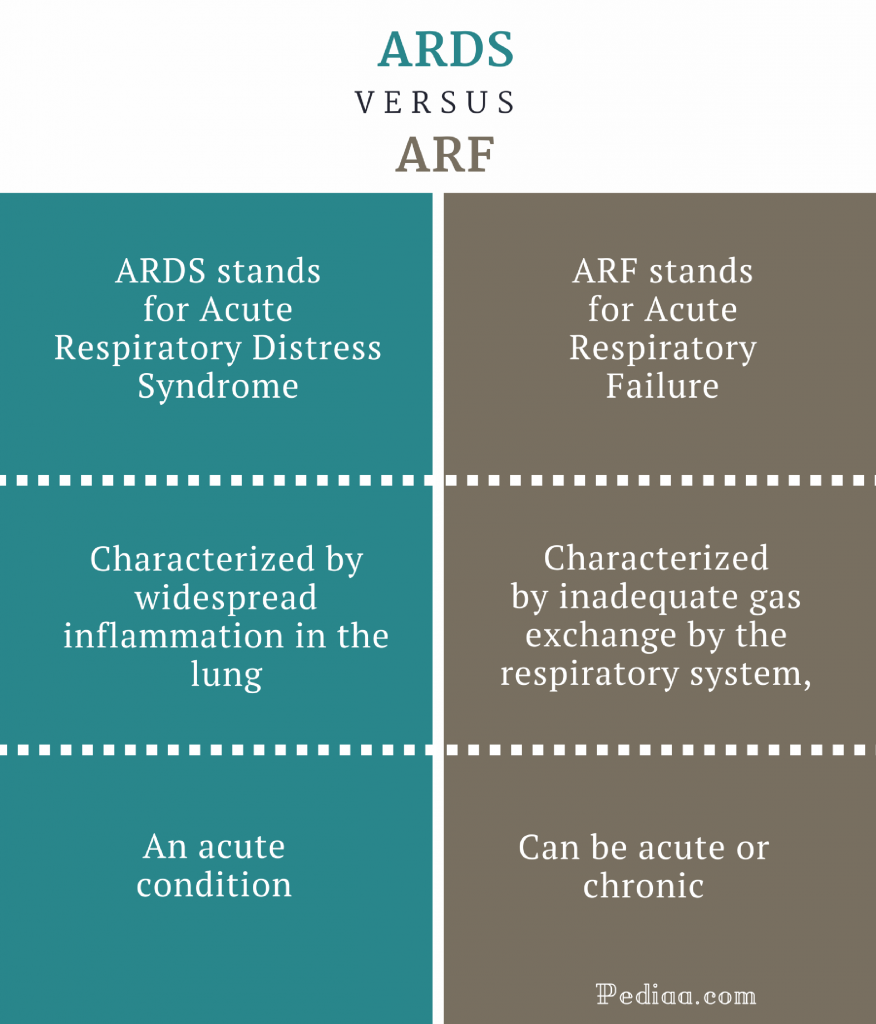Respiratory Failure Vs Respiratory Arrest - Respiratory distress is a clinical state characterized by abnormal (increased or decreased) respiratory rate or effort. (see also respiratory failure, dyspnea, and. Respiratory failure can result from upper or lower airway obstruction, lung tissue disease, and disordered control of breathing. Respiratory arrest and cardiac arrest are distinct, but inevitably if untreated, one leads to the other. • differentiate between respiratory distress and respiratory failure • explain when to oxygenate and when to ventilate a patient • discuss the aha’s.
• differentiate between respiratory distress and respiratory failure • explain when to oxygenate and when to ventilate a patient • discuss the aha’s. (see also respiratory failure, dyspnea, and. Respiratory distress is a clinical state characterized by abnormal (increased or decreased) respiratory rate or effort. Respiratory arrest and cardiac arrest are distinct, but inevitably if untreated, one leads to the other. Respiratory failure can result from upper or lower airway obstruction, lung tissue disease, and disordered control of breathing.
Respiratory arrest and cardiac arrest are distinct, but inevitably if untreated, one leads to the other. Respiratory distress is a clinical state characterized by abnormal (increased or decreased) respiratory rate or effort. Respiratory failure can result from upper or lower airway obstruction, lung tissue disease, and disordered control of breathing. (see also respiratory failure, dyspnea, and. • differentiate between respiratory distress and respiratory failure • explain when to oxygenate and when to ventilate a patient • discuss the aha’s.
Airway algorithm review
• differentiate between respiratory distress and respiratory failure • explain when to oxygenate and when to ventilate a patient • discuss the aha’s. Respiratory distress is a clinical state characterized by abnormal (increased or decreased) respiratory rate or effort. Respiratory arrest and cardiac arrest are distinct, but inevitably if untreated, one leads to the other. (see also respiratory failure, dyspnea,.
Respiratory Distress vs Failure vs Arrest Diagram Quizlet
Respiratory failure can result from upper or lower airway obstruction, lung tissue disease, and disordered control of breathing. • differentiate between respiratory distress and respiratory failure • explain when to oxygenate and when to ventilate a patient • discuss the aha’s. Respiratory distress is a clinical state characterized by abnormal (increased or decreased) respiratory rate or effort. Respiratory arrest and.
Diagnose Respiratory Distress and Respiratory Failure PALS Handbook
Respiratory arrest and cardiac arrest are distinct, but inevitably if untreated, one leads to the other. (see also respiratory failure, dyspnea, and. • differentiate between respiratory distress and respiratory failure • explain when to oxygenate and when to ventilate a patient • discuss the aha’s. Respiratory failure can result from upper or lower airway obstruction, lung tissue disease, and disordered.
2017 PARAMEDIC REFRESHER COURSE ppt download
• differentiate between respiratory distress and respiratory failure • explain when to oxygenate and when to ventilate a patient • discuss the aha’s. Respiratory arrest and cardiac arrest are distinct, but inevitably if untreated, one leads to the other. Respiratory failure can result from upper or lower airway obstruction, lung tissue disease, and disordered control of breathing. Respiratory distress is.
PPT Chapter 6 PowerPoint Presentation ID3769623
Respiratory arrest and cardiac arrest are distinct, but inevitably if untreated, one leads to the other. (see also respiratory failure, dyspnea, and. • differentiate between respiratory distress and respiratory failure • explain when to oxygenate and when to ventilate a patient • discuss the aha’s. Respiratory distress is a clinical state characterized by abnormal (increased or decreased) respiratory rate or.
Difference Between ARDS and ARF Clinical Features, Cause, Signs and
Respiratory distress is a clinical state characterized by abnormal (increased or decreased) respiratory rate or effort. (see also respiratory failure, dyspnea, and. Respiratory failure can result from upper or lower airway obstruction, lung tissue disease, and disordered control of breathing. • differentiate between respiratory distress and respiratory failure • explain when to oxygenate and when to ventilate a patient •.
Respiratory Distress vs. Failure vs. Arrest (2024)
(see also respiratory failure, dyspnea, and. Respiratory arrest and cardiac arrest are distinct, but inevitably if untreated, one leads to the other. Respiratory failure can result from upper or lower airway obstruction, lung tissue disease, and disordered control of breathing. Respiratory distress is a clinical state characterized by abnormal (increased or decreased) respiratory rate or effort. • differentiate between respiratory.
MSN 16 Respiratory Arrest/ Insufficiency/Respiratory Failure YouTube
• differentiate between respiratory distress and respiratory failure • explain when to oxygenate and when to ventilate a patient • discuss the aha’s. (see also respiratory failure, dyspnea, and. Respiratory failure can result from upper or lower airway obstruction, lung tissue disease, and disordered control of breathing. Respiratory distress is a clinical state characterized by abnormal (increased or decreased) respiratory.
Respiratory Distress vs. Failure vs. Arrest EXPLAINED 🫁 YouTube
Respiratory distress is a clinical state characterized by abnormal (increased or decreased) respiratory rate or effort. • differentiate between respiratory distress and respiratory failure • explain when to oxygenate and when to ventilate a patient • discuss the aha’s. (see also respiratory failure, dyspnea, and. Respiratory failure can result from upper or lower airway obstruction, lung tissue disease, and disordered.
PPT Pediatric Respiratory Emergencies PowerPoint Presentation ID
Respiratory distress is a clinical state characterized by abnormal (increased or decreased) respiratory rate or effort. (see also respiratory failure, dyspnea, and. • differentiate between respiratory distress and respiratory failure • explain when to oxygenate and when to ventilate a patient • discuss the aha’s. Respiratory arrest and cardiac arrest are distinct, but inevitably if untreated, one leads to the.
(See Also Respiratory Failure, Dyspnea, And.
Respiratory arrest and cardiac arrest are distinct, but inevitably if untreated, one leads to the other. • differentiate between respiratory distress and respiratory failure • explain when to oxygenate and when to ventilate a patient • discuss the aha’s. Respiratory failure can result from upper or lower airway obstruction, lung tissue disease, and disordered control of breathing. Respiratory distress is a clinical state characterized by abnormal (increased or decreased) respiratory rate or effort.









